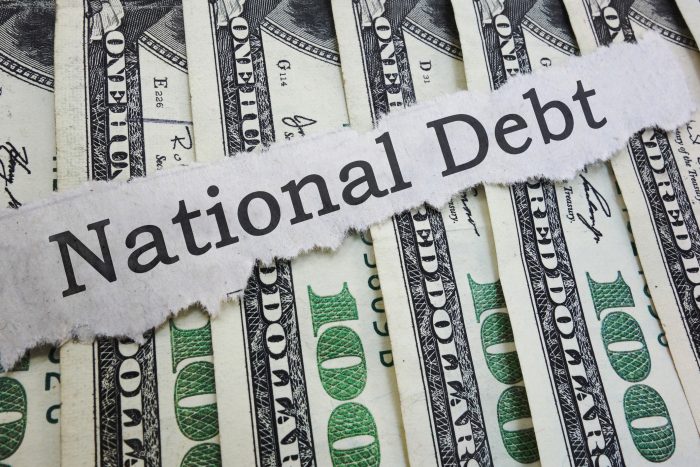The Unnoticed Trillion Dollar Budget Gap

In the 1980s critics of overspending pointed to record deficits (averaging $167 billion a year then) and were often met with replies from supply-siders—“Don’t worry about federal deficits. They’re big enough of take care of themselves.” President Reagan even uttered the phrase once.
While mildly amusing at the time, nothing is funny today. Our federal government will spend nearly $1 trillion more in the current fiscal year than will be collected in tax revenue. Each year going forward is projected to be even worse. Most alarming is the $363 billion in this year’s budget for interest on the debt, the price paid for decades of spending beyond revenues. This is akin to finance charges on credit cards that pay for spending beyond one’s earnings.
This $363 billion is money that cannot be spent on anything else, including vital national priorities. We get zero for it. But that’s not even the worst of it. The Congressional Budget Office projects the U.S. will pay more in interest to service its debt than it will spend on Defense in five years.
You might expect there to be some embarrassment, outrage, or an urgent call to action by both political parties. Or you might suppose that prominent leaders in Congress or the Executive Branch are at least talking about the issue. But you’d be wrong. It’s similar to pointing out this rather obvious detail to a fish, “look at all this water around here” with the fish responding, “what water?” Neither party wants to talk about the budget deficit nor the $22 trillion national debt, which is the accumulation of all past deficits. The total debt now equates to $66,000 for every citizen and $178,000 per taxpayer.
“Cut spending” you might say. But be careful, as 82 percent of the budget is comprised of interest payments (which cannot be cut lest we default) plus just four programs— Social Security, Defense/Veterans, Medicare, and Medicaid. These are all popular with voters and are precisely the programs politicians say must not be touched.
Here’s the challenge. Eliminating (not just cutting) every item other than “The Big Four” still does not get us to balance. And “everything else” is a lot—air traffic controllers, national parks, disease research, FBI, and federal courts and prisons, to list a pittance of programs and agencies. Thus, cutting congressional pay, food stamps, and foreign aid gets the budget nowhere near balance. It’s grains of sand on a beach.
If voters want the current high level of government spending, from which lots of people benefit who don’t like to admit it, then we must pay for it with increased taxes. If we like the current level of taxation, then spending must be brought down to that level to match revenues. That would have to include cuts to Medicare, veteran’s programs, and the military. It’s simple math. Social Security, supposedly self-financing, will run a deficit every year from 2019 until 2034. Past surpluses are keeping benefits from being cut now. But that ends in just over a decade. Social Security needs to be preserved but more importantly, modernized. In so many ways it’s a program stuck in the 1940s.
This much is certain—we can no longer live in “the land of make believe.” The insanity of our federal government borrowing money each week (much of it from the Chinese) to fund over-consumption cannot continue much longer, just as paying for groceries on a credit card every week could never continue in perpetuity.
The non-partisan Committee for a Responsible Federal Budget has been one of only a few voices advocating for eliminating budget deficits by tackling the top drivers of them (i.e. “The Big Four”). Read more on their site here.
To read AMAC’s Social Security Guarantee (including the Social Security PLUS component), a serious reform proposal to preserve and modernize Social Security and extend its solvency for 75 more years without raising taxes on workers, click here.
